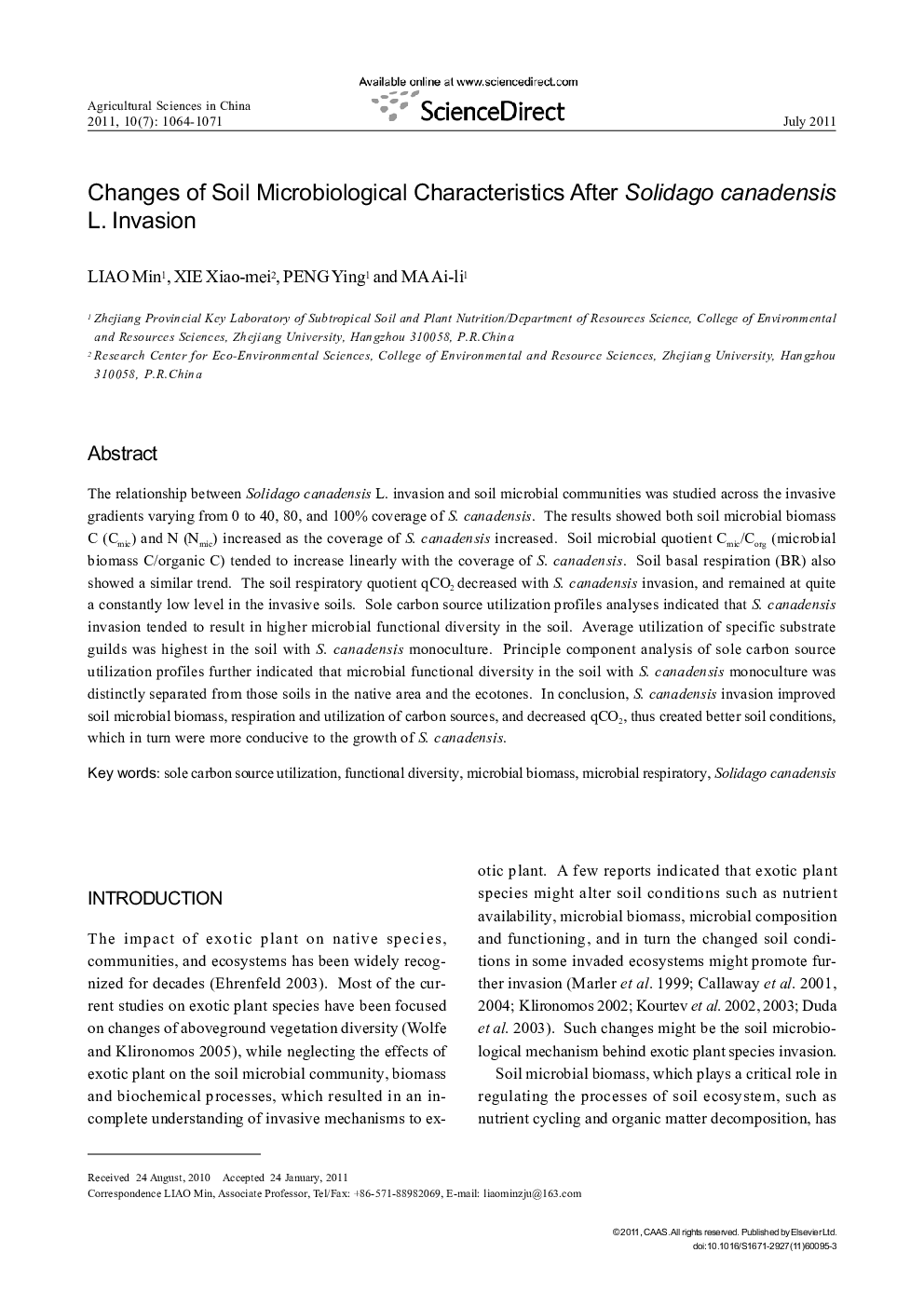| Article ID | Journal | Published Year | Pages | File Type |
|---|---|---|---|---|
| 4489867 | Agricultural Sciences in China | 2011 | 8 Pages |
The relationship between Solidago canadensis L. invasion and soil microbial communities was studied across the invasive gradients varying from 0 to 40, 80, and 100% coverage of S. canadensis. The results showed both soil microbial biomass C (Cmic) and N (Nmic) increased as the coverage of S. canadensis increased. Soil microbial quotient Cmic/Corg (microbial biomass C/organic C) tended to increase linearly with the coverage of S. canadensis. Soil basal respiration (BR) also showed a similar trend. The soil respiratory quotient qC02 decreased with S. canadensis invasion, and remained at quite a constantly low level in the invasive soils. Sole carbon source utilization profiles analyses indicated that S. canadensis invasion tended to result in higher microbial functional diversity in the soil. Average utilization of specific substrate guilds was highest in the soil with S. canadensis monoculture. Principle component analysis of sole carbon source utilization profiles further indicated that microbial functional diversity in the soil with S. canadensis monoculture was distinctly separated from those soils in the native area and the ecotones. In conclusion, S. canadensis invasion improved soil microbial biomass, respiration and utilization of carbon sources, and decreased qC02, thus created better soil conditions, which in turn were more conducive to the growth of S. canadensis.
